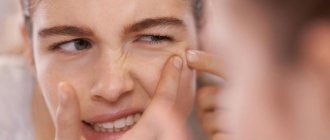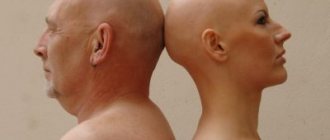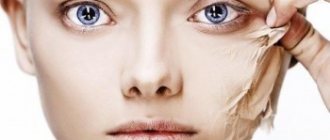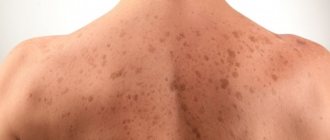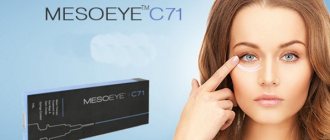Abscesses formed by a staphylococcal infection in the thickness of the dermis around the hair follicles are called boils or boils, and the disease itself is called furunculosis. A boil on the face is the most dangerous type, since the cavity with pus is located in close proximity to the brain.
The appearance of such subcutaneous suppurations is accompanied by severe local pain; in severe cases, the temperature rises and signs of general intoxication of the body appear. Doctors recommend that at the first sign of a boil you seek medical help, do not use medications uncontrollably and do not try to squeeze out the abscess or open it in any other mechanical way.
Why and why boils appear on the face: the main reasons
A furuncle (boil) is an acute purulent-necrotic inflammation of the hair follicle, as well as surrounding tissues and the sebaceous gland at the hair root. In the international classification ICD 10, such abscesses are identified as a separate item with code L02.0 - skin abscess, boil and carbuncle of the face. This also includes ulcers that form inside the nasal passages. But boils, which are located in the ears and on the scalp, belong to a different type (an ear boil is also called otitis externa).
Boils appear as a result of skin infection in the area of the hair follicle, which is caused by Staphylococcus aureus (in most cases) or other pyogenic bacteria.
The main causes of furunculosis:
- decreased immune status;
- insulin-dependent diabetes mellitus;
- general weakening of the body after serious illness;
- dermatological diseases accompanied by metabolic disorders and decreased body resistance (psoriasis, eczema, etc.);
- insufficient or unbalanced nutrition with a deficiency of proteins and vitamins;
- failure to comply with hygiene rules.
More often, boils on the face occur in the spring and autumn, when the immune system is weakened and the body lacks vitamins and solar ultraviolet radiation. Those who often suffer from colds and people with oily skin are especially prone to the appearance of boils. In summer, boils are most often localized in places of profuse sweating or where the skin is rubbed by folds of clothing.
In a child, very often boils on the face can be the result of constant squeezing of pimples, especially if this is done without following the rules of hygiene (DO NOT squeeze acne with unwashed hands; moreover, it is important to treat the skin after the “mechanical” procedure with aseptic means).
Men suffer from boils that appear where the skin is cut when shaving or ingrown hairs. In women, boils most often appear after depilation in the bikini area, but can also be localized on the face (during depilation of the “antennae” and the so-called “gun”).
Diagnostics
There is a certain list of diseases that cause the formation of subcutaneous acne. Here they are:
- Dermatological diseases, for example, Staphylococcus aureus.
- Diseases of the gastrointestinal tract, causing disturbances in the removal of harmful substances from the body, constipation.
- Lack of vitamins in the body.
- Liver diseases - acne appears on the feet.
- Problems with the reproductive system cause the formation of a rash of subcutaneous acne around the mouth.
- Malfunctions in the excretory system, which causes swelling - acne is localized on the fingers.
- Diseases of the endocrine system - in this case, internal acne is localized on the chin.
In some cases, the appearance of pimples may indicate a cold. Often, subcutaneous pimples form in people who have had sinusitis; in this case, the rashes are located behind the ears, on the nose and cheekbones.
In men over 35 years of age, acne on the palms of the hands and all over the body may indicate prostate problems. But an internal pimple on the nose indicates problems with the cardiovascular system.
Most experts are inclined to believe that the formation of subcutaneous acne is associated with disruption of the digestive and endocrine systems. Therefore, it is important not to self-medicate, but to promptly seek help from a doctor.
What it looks like: photo
Boils look so characteristic that it is not difficult for doctors to diagnose the disease by appearance.
Photos of a boil on the face are presented below:
The appearance of boils depends on the stage of the disease. There are 3 of them in total:
- infiltration;
- necrotization;
- healing.
At first, the boil looks like a small reddish swelling. The skin thickens, becomes swollen and red, and the person experiences characteristic pain that accompanies suppuration.
At the stage of necrotization, a boil on the face looks like a large purulent pimple, the white head of which is surrounded by swollen, reddened skin. The white dot in the center of the abscess is a necrotizing rod consisting of dead tissue. If the diameter of the boil exceeds 0.5 cm, doctors prescribe antibiotics. The process of stretching the skin leads to its thinning and the breakthrough of pus outward with the release of the rod. If it does not come out, use small tweezers to remove it. At this stage, the patient experiences a feeling of relief, throbbing pain and a feeling of heat disappear.
During the healing stage, the boil (more precisely, what is left after it) resembles a small volcanic crater, which gradually narrows in diameter, and the bottom of the wound cavity rises until, finally, a small round scar remains on the skin. With small boils, the scar can be almost invisible, but large ulcers leave slightly retracted marks, as they form at the site of significant stretching of the subcutaneous tissue.
Types of subcutaneous acne
The classification of internal acne is divided as follows:
- white - appears under the skin, inside there is a void filled with pus;
- red - a pimple with suppuration, which swells, increases in size and rises above the dermis.
Acne types:
- Closed comedones are accumulations of subcutaneous sebum that cannot be released. They look like bumps that rise above the surface of the skin.
- A papule is an inflammatory pimple reaching 3 cm in diameter. It appears at the site of a closed comedon.
- Pustules are white subcutaneous pimples.
How to cure boils on the face at home: 7 effective remedies
Patients with furunculosis usually consult a doctor with complications accompanied by severe pain and fever. Before this, treatment of a boil on the face is carried out using traditional methods, the effectiveness of which has been tested for centuries. This technique is good because it does not require a lot of money, and it uses improvised means that are always at hand. But if home medicine turns out to be ineffective, you should immediately consult a doctor to avoid blood poisoning and other troubles.
The main method of treating boils at home is the intermittent application of moist heat, when a piece of cloth (gauze, towel, napkin) is moistened with warm water and applied to the boil for 10-20 minutes. This procedure is performed 3-4 times a day. Warming the surface tissue stimulates local blood circulation and increases the flow of white blood cells into the subcutaneous abscess, which in turn accelerates its breakthrough. Other methods are based on the use of plant materials or other natural products.
If you cannot cure the boil within a week, you should immediately make an appointment with a doctor.
IMPORTANT: below we will present exclusively folk remedies that can be prepared at home. At the same time, it is still advisable to consult a dermatologist in person and use special ointments for the treatment of boils as prescribed, which are discussed in a separate article on our website.
Flatbread made from flour and honey
The healing properties of honey are used to treat staphylococcal infections. If a boil appears on the face, a flat cake is made from honey (it is best to use linden honey) and rye flour.
Enough flour is added to the honey to form a dense, non-disintegrating mass. A cake is formed from it in such a size that it completely covers the boil, applied to the inflamed area of skin, and covered on top with a piece of gauze or bandage moistened with an alcohol-containing liquid, vodka or moonshine. All this is covered with film or paper for compresses and wrapped with a bandage. To remove the pus, it will take from one to five procedures, 1-3 times a day.
Black bread with salt
A piece of Borodino bread is chewed well with salt, the resulting gruel is applied to the surface of the skin in the place where the rod is visible. Cover with a paper napkin, parchment paper on top, and bandage it. The bread mass facilitates the release of pus and reduces swelling and pain. You can put it 1-5 times a day until it becomes easier.
Note: the patient himself must chew the bread, since the saliva of each person contains his “native” microflora, including opportunistic microorganisms. “Own” bacteria will not cause a response from the body, but the immune system may rebel against someone else’s, which will not improve the patient’s condition. By the way, this is why bites inflicted on a person by another person take so long and hard to heal.
Baked onion
The onion is baked in the oven for 15 minutes, cooled until warm, then cut in half and applied to the site of inflammation. The top is bandaged with cloth. You can keep it for several hours, after which the bandage is changed, applying baked onions again. This helps the boil to break through faster and the purulent core to come out without any problems.
In the old days, bulbs for such treatment were baked in Russian ovens, where particles of wood ash remained on them. This product not only contributed to the rapid softening of the skin and the breakthrough of the abscess, but also had a local antiseptic effect.
If you don’t have an oven, you can put the onion, cut in half, in a dry frying pan and keep it covered over low heat for a few minutes, then cool and use as usual. Alternatively, grind the baked onion in a blender, add a few drops of camphor oil to the mixture and apply it to the skin.
Birch leaves
Young birch is best suited. A handful of leaves are doused with boiling water, after which they are soaped with laundry soap. The entire boil is covered with birch leaves (they stick well), and the top is covered with a bandage.
Traditional medicine claims that the internal abscess will burst within a maximum of 3 hours after the procedure.
aloe leaves
The skin over the boil is sprinkled with baking soda and an aloe leaf cut lengthwise is placed on it and bandaged. To open the abscess, it is enough to apply the product a couple of times.
Note: the leaves of a 2-3 year old plant have the most pronounced medicinal properties. The beneficial substances contained in aloe are maximally activated if the cut leaf is placed in the refrigerator for 12 hours and then used.
Raw potatoes
Usually, fresh burns are treated with potato pulp, but it also helps with furunculosis. To get rid of boils, you need to grate a medium-sized raw potato on a fine grater (you can use a blender) and apply the resulting mass to the abscess. It is better to lightly squeeze out the excess potato juice.
The skin on the face is covered with a film and lightly bandaged. This application speeds up the opening of the abscess.
Rendered fat with propolis
Homemade ointment is made from rendered animal fat (most often lard, since other types - beef, lamb - are more refractory) and dry propolis in a ratio of 5:1.
The mass is placed in a bowl and heated in a water bath until the fat melts, after which it is boiled for about an hour so that the beneficial substances of propolis are transferred into the ointment. Apply the product to the boil twice a day.
What you absolutely cannot do is to smear an incipient boil with antibiotic ointment, and at the stage of formation of a purulent core, try to squeeze out the pus. Any mechanical impact can lead to the penetration of pathogenic bacteria into blood or lymphatic vessels and serious complications.
HPV - Human papillomavirus
Causes the appearance of condylomas and warts on the mucous membranes and skin. More than 200 varieties of the virus are known, of which 50% are the main cause of warts. The cause of the virus is low immunity and skin microtraumas. When infected, the virus may not appear for a long time, but become more active when the body weakens. There is a definite connection between HPV infection and some forms of cancer, including cervical cancer.
Important! Usually, each disease has pronounced symptoms, but often skin changes can be grouped, which complicates the diagnostic process. To find out the reasons for the appearance of deviations, it is necessary to undergo an examination and be extremely frank with the dermatologist, without hiding habits or diseases. Self-medication or use of drugs without an accurate diagnosis can worsen the situation.
We recommend reading the Zen channel “https://zen.yandex.ru/vodakanazer.ru”, where you will find a lot of useful information for summer residents and gardeners.
What happens if you run it?
Lack of treatment will lead to the purulent process involving deeper tissues or spreading to the lymphatic periphery. A neglected boil is fraught, first of all, with sepsis - blood poisoning. If boils appear on the face, then the main danger lies in the immediate proximity to the brain.
A risk factor is inflammation on the face in the area above the upper lip, as well as in the so-called triangle of death - it is outlined on the sides by nasolabial folds, covering the nose and mouth.
This area is rich in vessels included in the venous and arterial network. The main difference between these vessels is that they do not have valves, which are found in all other places. This structure facilitates the transport of pathogenic microflora into the brain, leading to meningitis.
Therefore, doctors recommend that if you have boils in the upper part of your face, you should immediately seek medical help.
Other complications:
- Thrombophlebitis of the veins of the face and neck (orbital, angular, facial, etc.).
- Thrombosis of the venous sinuses of the cerebral membrane.
- Phlegmon (purulent inflammation without clear boundaries).
- Carbuncle. If other purulent cores appear next to the primary boil, such a multiple boil is called a carbuncle. It is treated by surgical excision of extensive necrosis.
- An abscess boil is the formation of a cavity filled with pus as a result of extensive purulent melting of tissue under the skin, directed inward and fraught with the entry of purulent contents into vital organs and systems.
- Inflammation of the lymph nodes and lymphatic vessels.
Prevention
What to do to reduce the risk of boils:
- Strengthen the immune system: lead a healthy lifestyle, harden the body, do morning exercises. It is advisable to give up bad habits (this is not only smoking and alcoholic libations, but also lack of sleep, the habit of sitting for hours at the computer, etc.). If a person does not recover from a cold, it makes sense to consult an immunologist.
- Remove fatty and spicy foods from your diet, enrich the menu with fresh vegetables and fruits. Reduce alcohol, strong tea and coffee to a minimum, instead of baked goods, chocolate and confectionery - porridge, bran bread, fermented milk products. If necessary, the doctor prescribes vitamin complexes.
- Follow the rules of hygiene - wash regularly, do not use other people’s towels, bed linen and underwear, razors, washcloths and other means. You need to remove hair on the head and body only with disinfected tools (such products as “penny” Chlorhexidine are suitable for this).
- Reduce the use of decorative cosmetics and other products that clog the pores of the facial skin. You can apply light moisturizers, but it is better to avoid foundation ones. You should not overuse antiperspirants, as they clog the sweat glands. As paradoxical as it may sound, those with oily skin should not wash their face with soap often. Although this procedure temporarily removes oily sheen, the sebaceous glands then produce sebum with triple the force, which greatly increases the risk of developing comedones, pimples and even boils.
Causes of skin diseases
The main causes that cause or aggravate skin diseases:
- genetic predisposition;
- presence of chronic diseases;
- stress and the presence of obsessive states (touching the face, scratching wounds, constant use of antibacterial soap);
- infection or viral infection;
- hormonal disorders;
- various allergic reactions;
- infection with skin parasites;
- constant exposure to negative factors (poor quality water, heavy dust, high environmental humidity, polluted air, etc.);
- presence of bad habits, violation of hygiene, nutrition and sleep;
- use of inappropriate, low-quality or spoiled cosmetics.
Important! Facial skin diseases that are not associated with infections and viruses can be triggered by chronic diseases, genetic characteristics or external factors.
